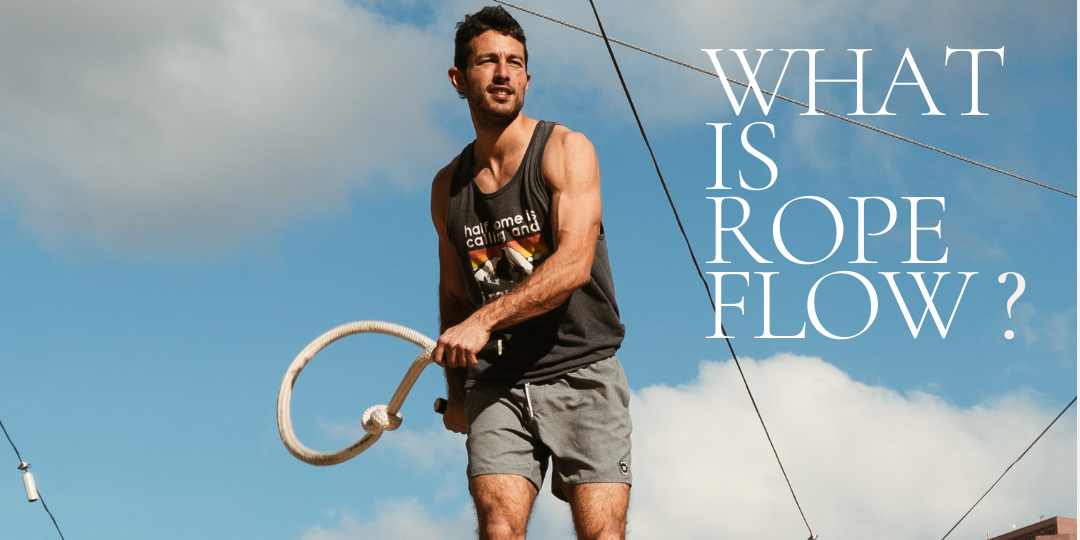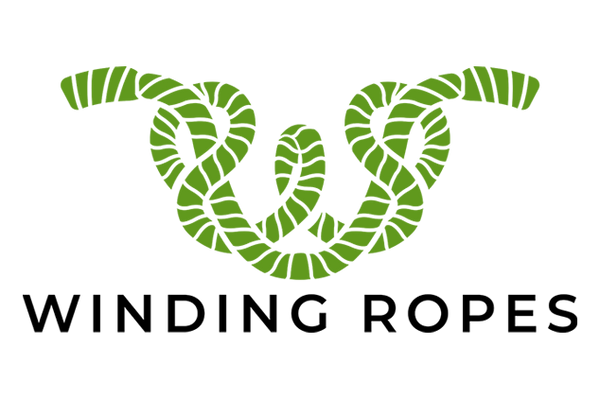
What Is Rope Flow?
Share
What Is Rope Flow? How It Works, Benefits & Beginner Guide
Rope Flow is a movement practice that involves swinging a rope around the body in flowing, rotational patterns. It was popularized by David Weck, who developed the original RMT Rope (Rotational Movement Training) under the WeckMethod. Unlike jump rope, Rope Flow isolates the swinging components and removes jumping entirely, allowing for a deeper focus on spinal rotation, weight shifting, and rhythmic coordination.
This method is rooted in principles from:
- The Spinal Engine by Dr. Serge Gracovetsky – exploring how spinal rotation powers locomotion.
- Anatomy Trains by Thomas W. Myers – introducing myofascial meridians that transmit force through the body.
- Somatics by Thomas Hanna – reeducating the nervous system through controlled, mindful movement.
- Muscles and Meridians by Phillip Beach – highlighting archetypal postures and natural movement restoration.
Benefits of Rope Flow
Rope Flow is more than just a workout. It’s a system for improving movement efficiency, nervous system health, and mental focus.
Physical Benefits
- Improves coordination, balance, and timing
- Builds muscular endurance and core strength
- Enhances cardiovascular fitness
- Increases mobility in shoulders, spine, and hips
- Supports joint health and lymphatic circulation
Cognitive and Neurological Benefits
- Engages both hemispheres of the brain
- Reinforces contralateral movement patterns
- Promotes neuroplasticity and reflex integration
Practical Advantages
- Low-impact, joint-friendly
- Portable and beginner-friendly
- Requires minimal space and equipment
- Easily integrates with warm-ups, cooldowns, or HIIT sessions
Rope Types: Choosing the Right Rope
At Winding Ropes, ropes are categorized by weight to support different training goals:
- Light Ropes (up to 550g): Ideal for rhythm, coordination, and learning the basics.
- Heavy Ropes (550g to 1.6kg): Add resistance and help build strength and endurance.
- Super Heavy Ropes (1.6kg+): Maximum resistance for advanced conditioning and grip training.
If you're just starting, we recommend beginning with a light rope before progressing to heavier options.
Foundational Rope Flow Movements
Understanding how the rope flows is key to making progress. All movements follow one cardinal rule:
The rope spins in one direction; we shift our body orientation around it. This creates patterns in overhand, underhand, and sideways directions.
One Beat Per Side
- Underhand Figure 8: Foundational pattern for rhythm and spinal rotation.
- Overhand Figure 8: Same mechanics in the opposite direction.
- Propeller: Rope spins parallel to the chest. Great for building rhythm and shoulder mobility.
Two Beats Per Side
- Underhand and Overhand Matador: Two-beat patterns that help train timing and flow.
- Dragon Roll: Rope touches the floor once in front and once behind in a sideways pattern.
Advanced Patterns
- Underhand and Overhand Sneak: Weaving the rope around the body while keeping it in continuous motion.
- Tandem Sneak: A more complex variation in the sideways plane.
Adding Footwork
- Matador Step: Integrates lower body movement into the matador pattern. Useful for agility and full-body coordination.
These movements are rooted in the neuromechanical concepts found in Somatics (Hanna, 1988), which emphasizes sensory awareness and control, and Muscles and Meridians (Beach, 2010), which supports movement through archetypal posture restoration.
For visual guides and step-by-step breakdowns, visit our Start Your Rope Flow Journey page.
Why Rope Flow Is Growing in Popularity
Rope Flow is gaining traction worldwide because it's:
- Accessible to all fitness levels
- Effective for both performance and recovery
- A hybrid of meditation, strength training, and coordination practice
- Easy to learn, hard to master—making it both engaging and rewarding
It's being adopted by martial artists, athletes, dancers, physical therapists, and everyday movers who want to feel better and move smarter.
How to Get Started
- Pick your rope based on your fitness level and goal.
- Start with the basics like the Underhand Figure 8 and Dragon Roll.
- Use a metronome or music with a consistent beat to develop rhythm.
- Practice regularly—5–10 minutes a day is enough to make progress.
- Join the community or follow online tutorials to stay motivated
FAQs About Rope Flow
What is Rope Flow?
A form of movement training that uses a rope to develop rhythm, coordination, and spinal mobility through rotational patterns.
Is it good for beginners?
Yes. Rope Flow has a shallow learning curve and low impact on the joints, making it ideal for beginners.
Can Rope Flow build muscle?
With heavier ropes, Rope Flow builds strength, especially in the shoulders, back, core, and grip.
Is Rope Flow cardio?
Yes. It can be done as steady-state cardio or as part of high-intensity interval training (HIIT).
Can it help with mobility?
Definitely. The spiral movements help unlock rotational mobility in the spine, shoulders, and hips.
References
- Gracovetsky, S. (1988). The Spinal Engine. Springer-Verlag.
- Myers, T. W. (2001). Anatomy Trains: Myofascial Meridians for Manual and Movement Therapists. Churchill Livingstone.
- Hanna, T. (1988). Somatics: Reawakening the Mind's Control of Movement, Flexibility, and Health. Da Capo Press.
- Beach, P. (2010). Muscles and Meridians: The Manipulation of Shape. Churchill Livingstone.
- Winding Ropes. (n.d.). Start Your Rope Flow Journey. https://www.windingropes.com/pages/start-your-rope-flow-journey
Ready to try Rope Flow?
Explore ropes, tutorials, and training options at windingropes.com.
